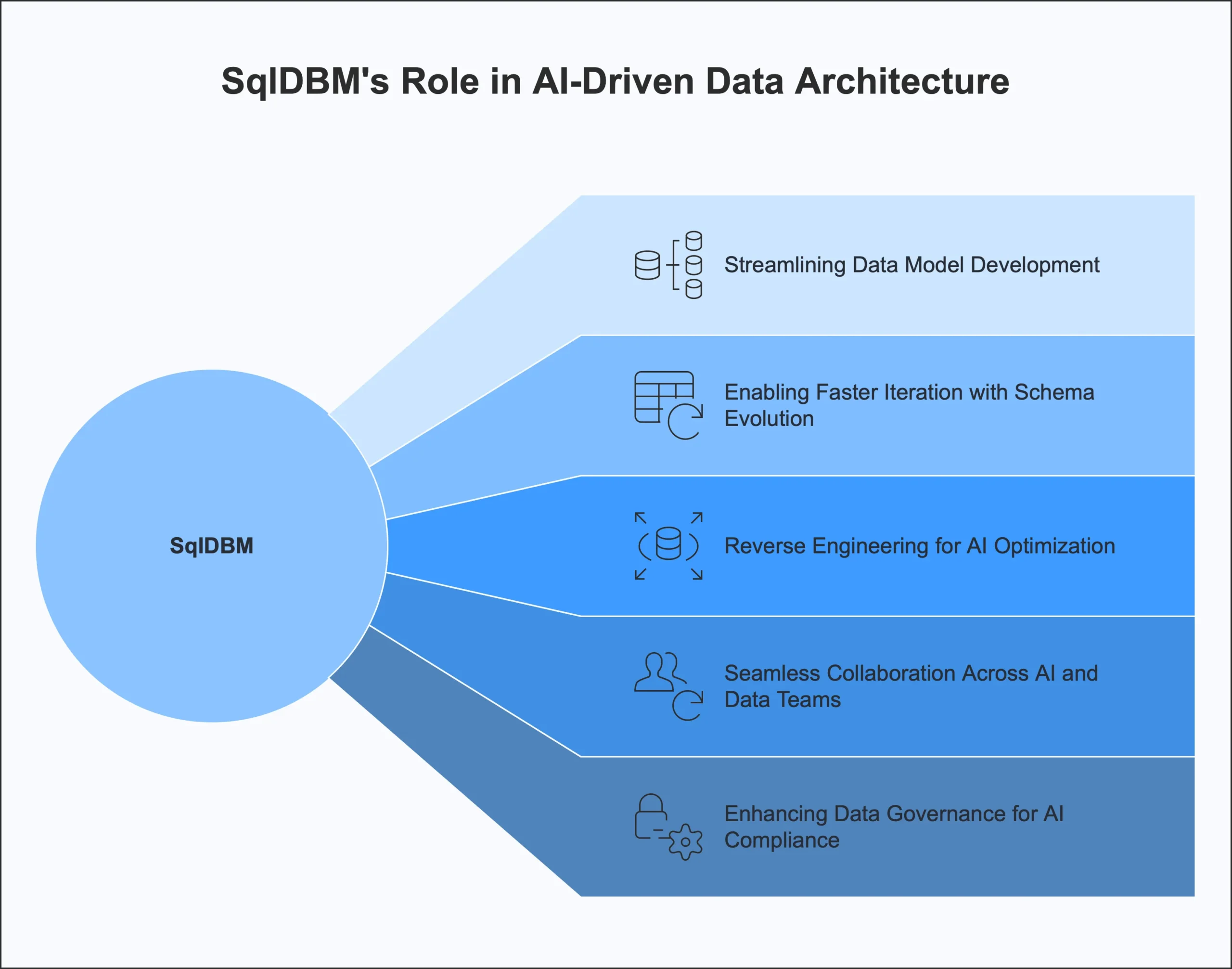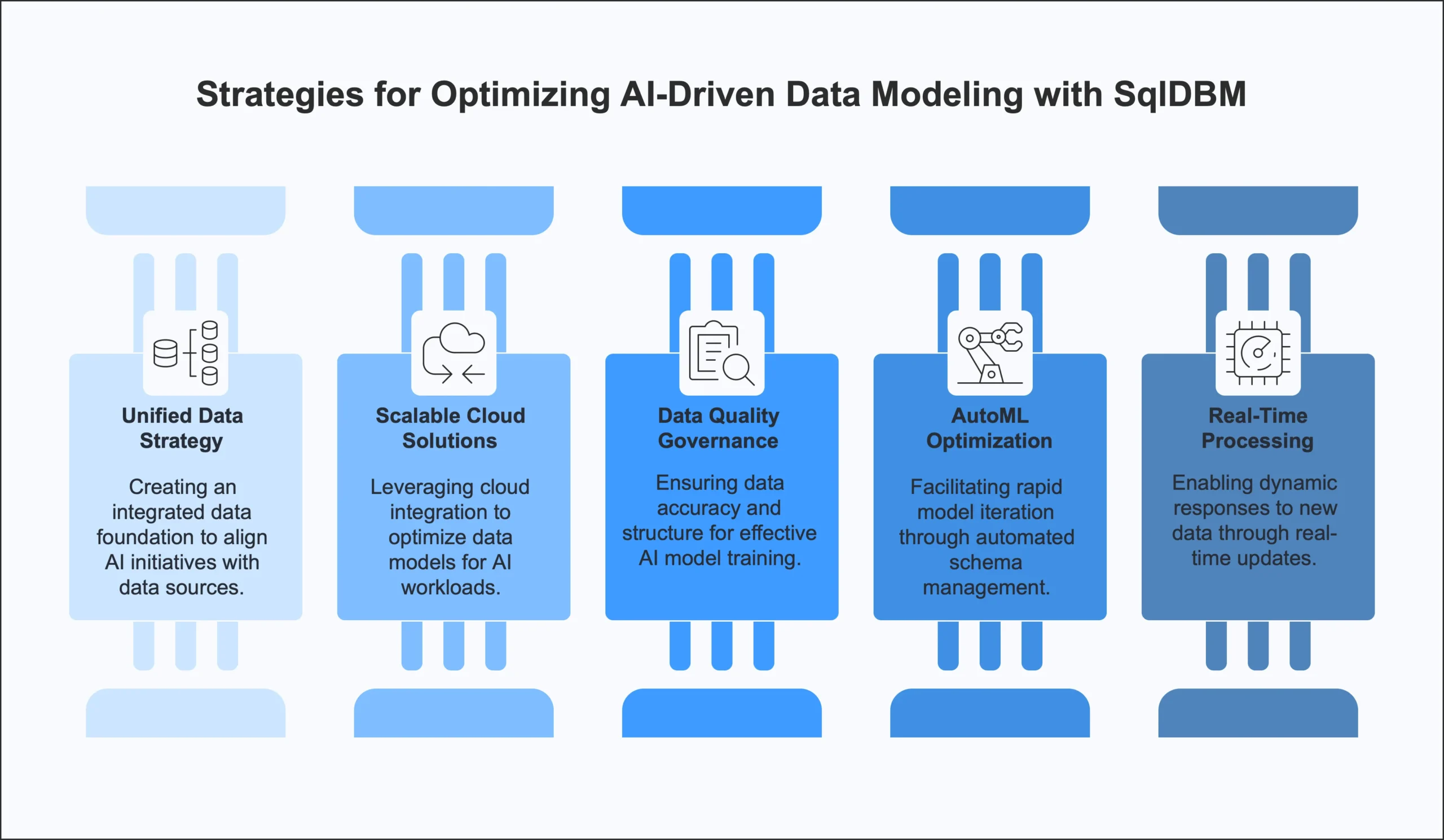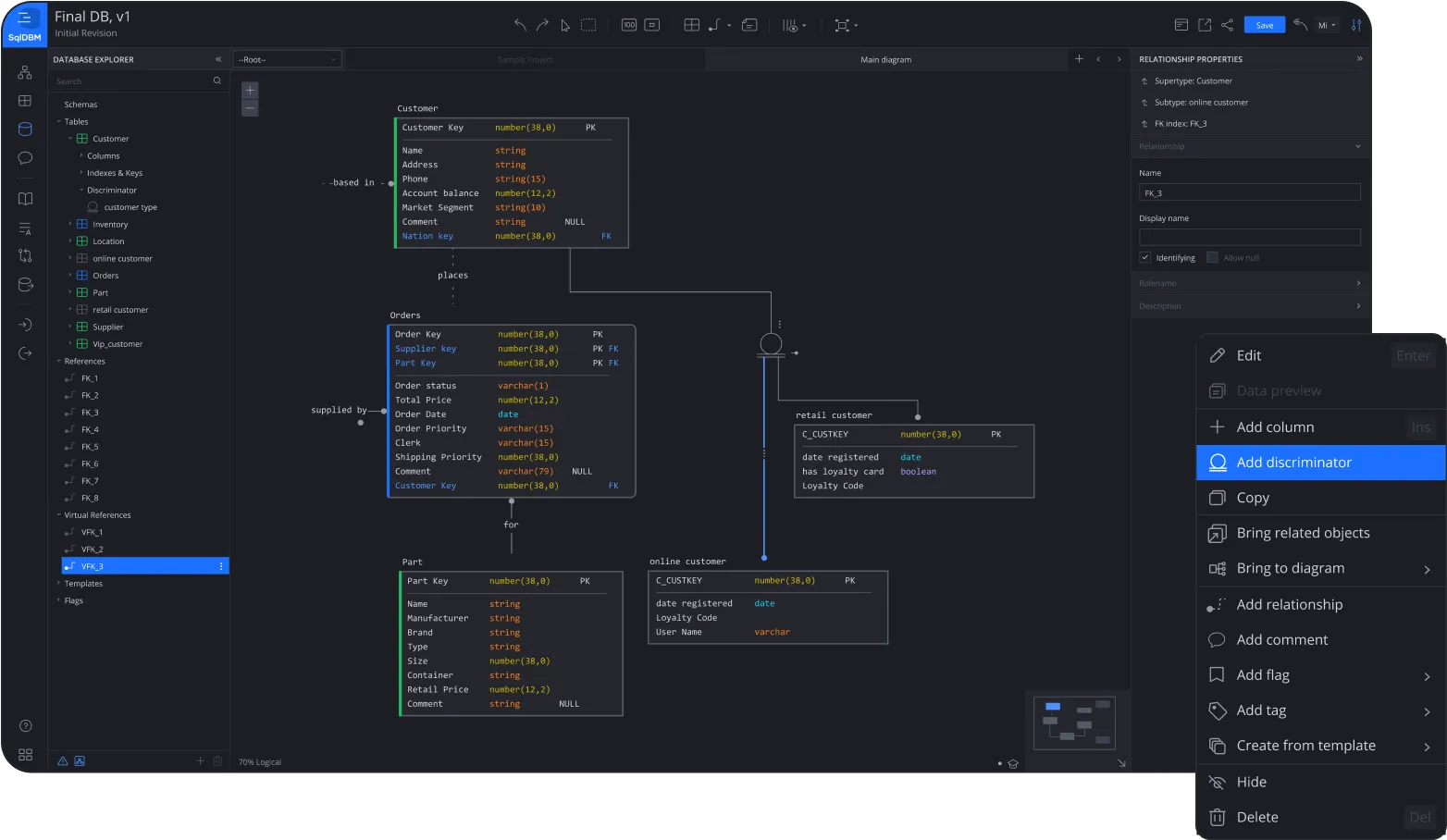Introduction

As enterprises accelerate their digital transformation efforts, the convergence of artificial intelligence (AI) and data modeling has become a pivotal force in driving innovation. With the ability to analyze massive datasets, uncover patterns, and generate predictive insights, AI is revolutionizing how organizations approach data architecture. Modern data platforms provide the ideal foundation for AI-driven data modeling, enabling businesses to build scalable, intelligent, and efficient data ecosystems.
As enterprises accelerate their digital transformation efforts, the convergence of artificial intelligence (AI) and data modeling has become a pivotal force in driving innovation. With the ability to analyze massive datasets, uncover patterns, and generate predictive insights, AI is revolutionizing how organizations approach data architecture. Modern data platforms provide the ideal foundation for AI-driven data modeling, enabling businesses to build scalable, intelligent, and efficient data ecosystems.
However, the risk of inaction in adopting AI-driven data modeling is significant. Organizations that fail to modernize their data architectures risk falling behind competitors who leverage AI for strategic decision-making, operational efficiency, and customer insights. Legacy data models, manual processes, and disconnected data sources create inefficiencies that prevent businesses from fully capitalizing on their data assets. In a rapidly evolving digital landscape, delaying AI adoption can lead to lost market opportunities, increased costs, and reduced agility in responding to business challenges.
The Role of SqlDBM in AI-Driven Data Modeling
SqlDBM, a leading cloud-based data modeling tool, plays a crucial role in AI-driven data architecture by simplifying the design, visualization, and management of complex data models. AI initiatives depend on well-structured, high-quality data models, and SqlDBM provides the framework necessary for seamless AI integration.
Key ways SqlDBM enhances AI-driven data modeling include:
- Streamlining Data Model Development: AI models require high-quality, well-structured data. SqlDBM enables organizations to design, refine, and optimize data models without writing extensive code, ensuring consistency and integrity in AI training datasets.
- Enabling Faster Iteration with Schema Evolution: AI models often require adjustments to schemas as data evolves. SqlDBM’s version control and schema comparison features allow teams to iterate quickly, ensuring AI models remain aligned with evolving business needs.
- Reverse Engineering for AI Optimization: SqlDBM allows organizations to reverse-engineer existing databases, helping AI teams understand current data structures and make necessary optimizations for more efficient AI model training.
- Seamless Collaboration Across AI and Data Teams: SqlDBM’s cloud-based platform supports real-time collaboration, allowing data engineers, data scientists, and AI specialists to work together in refining data models for AI applications.
- Enhancing Data Governance for AI Compliance: AI initiatives require strong governance to maintain compliance and data integrity. SqlDBM helps enforce governance best practices, ensuring AI models are trained on properly managed, accurate data.
Key Elements of AI-Driven Data Modeling in Modern Architecture
Modern data architectures offer several advantages for AI and data modeling initiatives:
1. Elastic Performance for AI Workloads
Modern data platforms allow organizations to scale AI workloads elastically. By decoupling storage and compute, enterprises can allocate resources efficiently for model training and inference without affecting operational queries. This elasticity ensures that organizations can dynamically adjust their computing resources based on demand, preventing over-provisioning and reducing costs.
2. Unified Data Across All Sources
AI models thrive on high-quality, diverse datasets. SqlDBM facilitates the integration of structured and semi-structured data across multiple platforms, empowering businesses to create comprehensive training datasets without complex ETL pipelines. By centralizing data models, SqlDBM ensures AI models are trained on clean, well-structured data, improving accuracy and relevance.
3. Built-in AI and ML Integrations
Modern data architectures seamlessly integrate with leading AI/ML frameworks, including Python, TensorFlow, PyTorch, and external machine learning platforms. SqlDBM supports these integrations by ensuring that AI teams have structured, high-quality datasets that align with ML workflows, accelerating AI adoption within enterprises.
4. Secure and Governed AI Deployments
Security and governance are critical in AI-driven data architectures. Role-based access control (RBAC), end-to-end encryption, and dynamic data masking ensure that AI models operate on compliant and governed datasets. SqlDBM enhances governance by providing model versioning, audit trails, and documentation, ensuring AI models adhere to regulatory and compliance requirements.
5. Cost-Efficiency and Optimized Query Performance
AI workloads can be computationally expensive, but modern architectures optimize costs with features like pay-as-you-go pricing, automatic query optimization, and materialized views. SqlDBM’s ability to model optimized database structures ensures AI models run on efficient, well-designed schemas, reducing storage and compute costs.
AI-Driven Data Modeling Strategies for Enterprises with SqlDBM
To fully harness the power of AI-driven data modeling, enterprises should implement the following strategies with SqlDBM:
- Develop a Unified Data Strategy: Use SqlDBM to create an integrated data foundation that aligns AI initiatives with structured and semi-structured data sources.
- Adopt Scalable Cloud-Based Solutions: Leverage SqlDBM’s seamless cloud integration to optimize data models for AI workloads hosted on cloud-based data warehouses.
- Enhance Data Quality and Governance: Use SqlDBM to enforce best practices in data modeling, ensuring AI models receive accurate and properly structured data.
- Leverage AutoML for Model Optimization: Enable faster model iteration by ensuring data schemas evolve dynamically using SqlDBM’s automated schema comparison and versioning tools.
- Implement Real-Time Processing Pipelines: SqlDBM facilitates real-time schema updates, allowing AI-driven applications to respond dynamically to new data.

Real-World Applications of AI-Driven Data Modeling with SqlDBM
Leading enterprises leverage modern data architectures, AI-driven data modeling, and SqlDBM to power innovative solutions across industries:
- Financial Services: AI models detect fraud in real-time, assess risk, and optimize investment strategies. SqlDBM ensures that AI models operate on well-structured, compliant datasets that adhere to financial regulations.
- Healthcare & Life Sciences: Predictive analytics improve patient outcomes, drug discovery, and hospital resource planning. SqlDBM helps data teams model healthcare data structures, ensuring AI models are trained on high-quality, HIPAA-compliant datasets.
- Retail & E-commerce: AI-based demand forecasting helps retailers anticipate seasonal trends and reduce stockouts. SqlDBM streamlines the creation of optimized data schemas, enhancing AI-powered recommendation engines.
- Manufacturing & Supply Chain: AI enhances demand forecasting, production planning, and predictive maintenance. SqlDBM assists in structuring IoT data models, enabling AI-driven insights for proactive decision-making.
- Energy & Utilities: AI-driven predictive maintenance optimizes energy distribution networks and improves grid reliability. SqlDBM ensures AI models are trained on well-structured operational data, improving efficiency and reducing costs.
Conclusion

AI-driven data modeling is transforming how businesses leverage their data assets, and SqlDBM is at the forefront of enabling efficient, scalable, and intelligent data models. By providing a cloud-based, collaborative, and automated data modeling environment, SqlDBM empowers organizations to accelerate AI initiatives, ensure data integrity, and optimize costs.
However, the risk of inaction is significant. Organizations that delay adopting AI-driven data modeling may struggle with inefficient operations, outdated decision-making processes, and increased vulnerability to market disruptions. Competitors that embrace AI and SqlDBM will gain a substantial edge in agility, accuracy, and innovation, leaving behind those who fail to adapt. Data-driven businesses are not just leveraging AI for incremental improvements — they are fundamentally reshaping industries and redefining customer expectations.
By integrating SqlDBM into AI-driven data strategies, organizations can further streamline data modeling, improve collaboration, and enhance governance. Investing in modern AI-driven data architecture with SqlDBM is no longer optional — it is essential for staying competitive in an increasingly data-driven world.

